JOIN the AFICIONADOS
Get the insider news and lowdown on what we've been up to, where we've been, and who we've met along the way. Be the first to discover new places and get the scoop on our favourites.
At 9 Via Manzoni in the heart of Milan, a building with deep architectural memory has been reborn. Palazzo Molteni, the new Milanese address for Molteni&C, offers more than a showroom or flagship. It is a thoughtfully composed interior journey, curated by Vincent Van Duysen, that redefines how we engage with space, memory and contemporary Italian design.
This seven-floor neoclassical residence, restored and adapted with precision, marks the brand’s 90th year with clarity and intent. Rather than creating spectacle, it favours calm. Each surface, proportion and volume contributes to a spatial narrative that is both reflective and quietly ambitious.
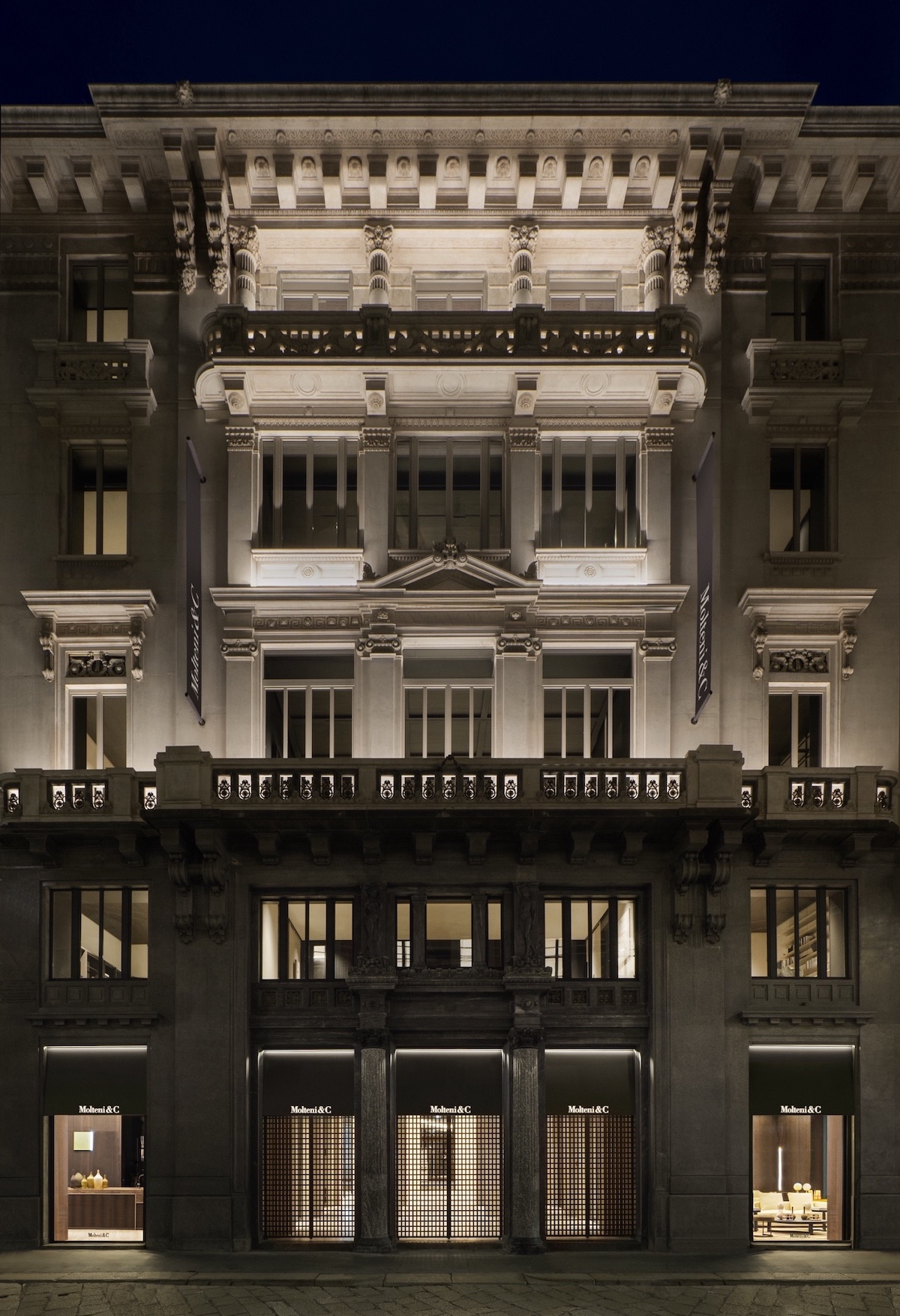
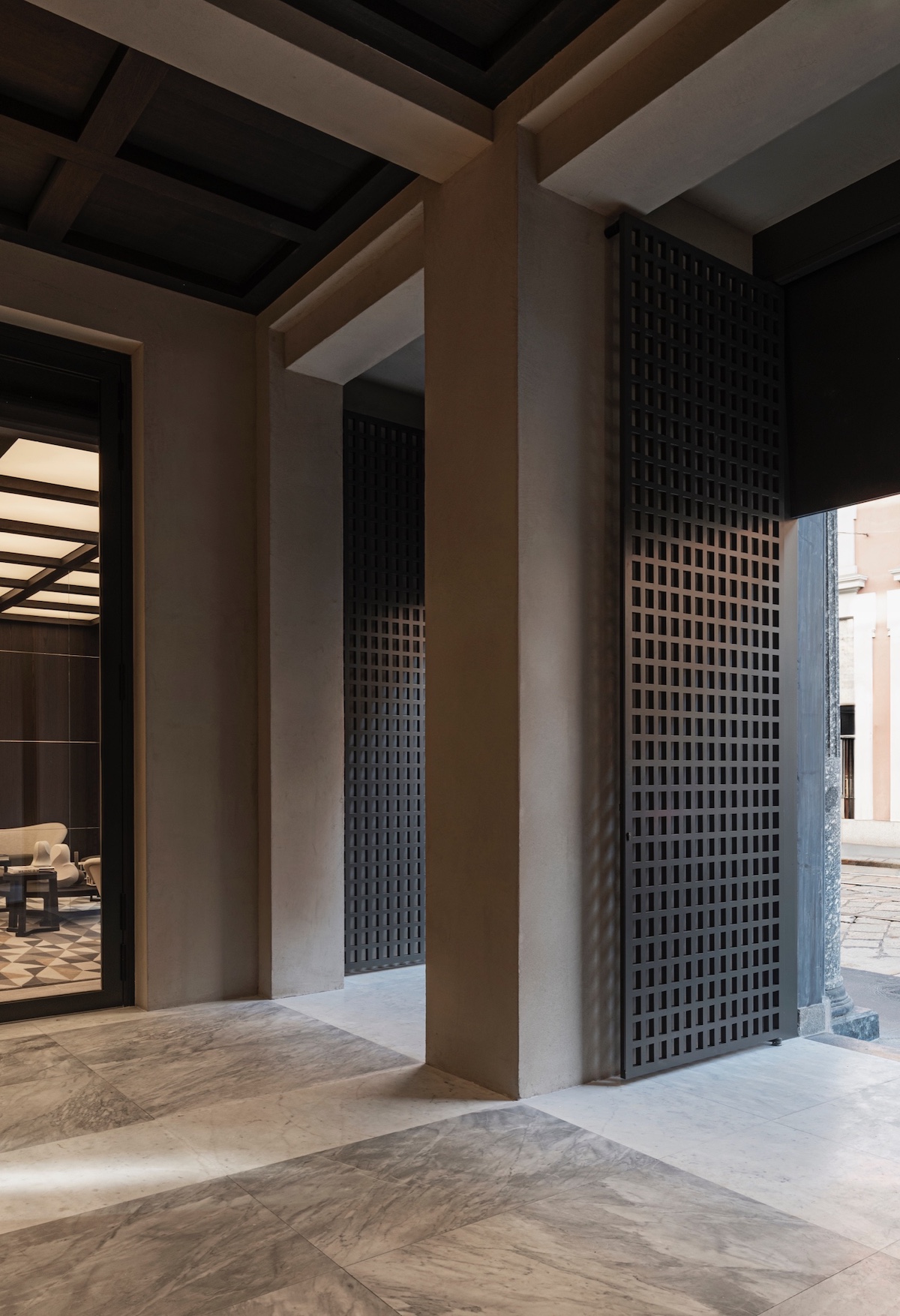
Originally built in the 19th century and reshaped in 1922 by architects Giuseppe Mentasti and Stefano Lissoni, the palazzo stands across from the Museo Poldi Pezzoli in Milan’s historic design and fashion district. A recent renovation by Merope Asset Management has reinstated the building’s original dignity, revealing its Liberty influences and classical detailing while introducing two new upper floors that integrate seamlessly with the original structure.
This context is important. The building is not simply a setting but part of the design conversation. Its position, architecture and history make it a natural platform for Molteni&C’s broader cultural ambitions. That ambition has already extended across the street, with installations at the Poldi Pezzoli museum including Letters to Milan by Studio Klass and Gio Ponti Objects, curated by Elisa Ossino.
This cultural emphasis is not incidental. It has been personally driven by Giulia Molteni, granddaughter of the company’s founder and Head of Marketing and Communications. A central force behind Palazzo Molteni, Giulia has described the space as “a home, a cultural destination and a Milanese residence” – framing the palazzo as a lived narrative where design, architecture and art coexist. Her involvement ensures that the building is not only visually refined, but also aligned with a deeper storytelling ethos, firmly rooted in place and identity.
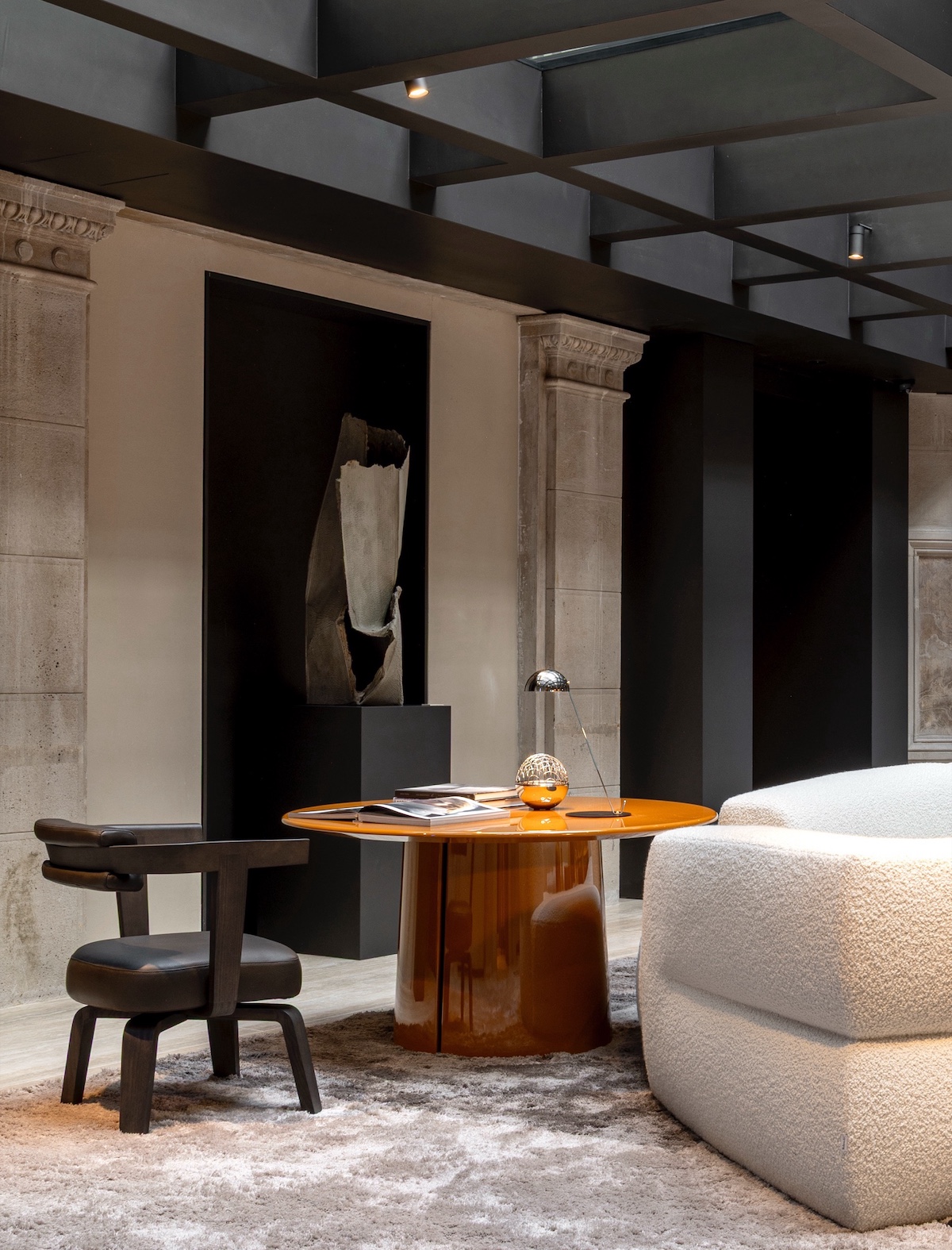
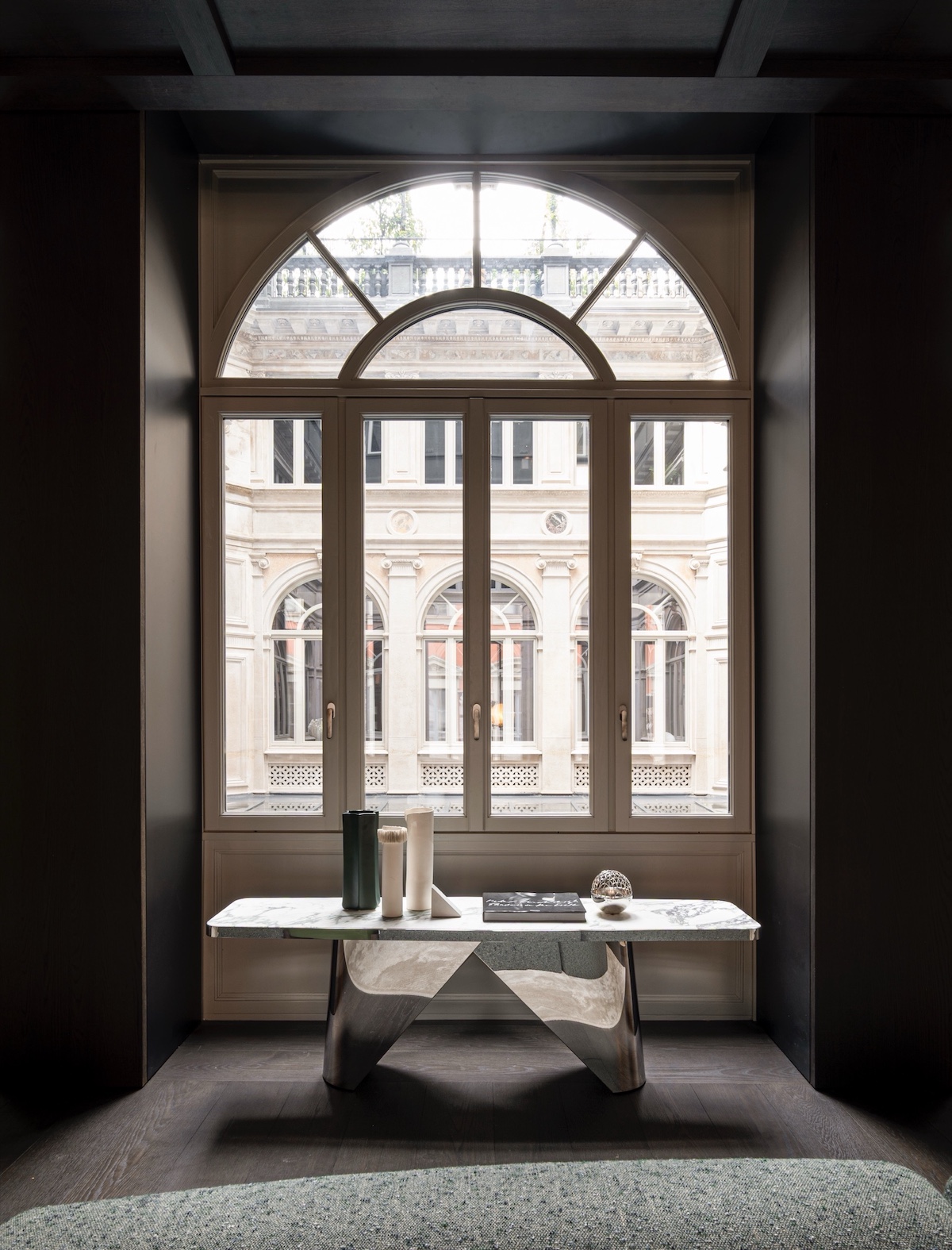
As creative Director, Van Duysen approached the interior not as a product display but as a composed architectural composition. The layout unfolds across 3,000 square metres, beginning with a covered gallery and a courtyard under a new glass canopy. The material language is rich and tactile: avocado marble, coffee-toned oak, light travertine, and rough-textured plaster in tonal layers. The atmosphere throughout is measured and reflective, never overstated.
A sculptural Augusto sofa, designed by Van Duysen, sits at the heart of the courtyard, establishing a central domestic rhythm. From here, a sweeping staircase leads through a sequence of spaces that maintain a sense of intimacy while offering a panoramic experience. Wallpaper and Archiproducts described the journey as akin to walking through a collector’s private residence where each floor reveals a different facet of the brand’s thinking.
Van Duysen’s design speaks to the essence of Milanese architecture: composed, introverted, precise. Elements of Liberty and neoclassicism have been reframed in contemporary language, with ceiling motifs, floor patterns and panelling forming a continuous spatial rhythm. The effect is not theatrical but immersive, focused on evoking a lived, tactile response.
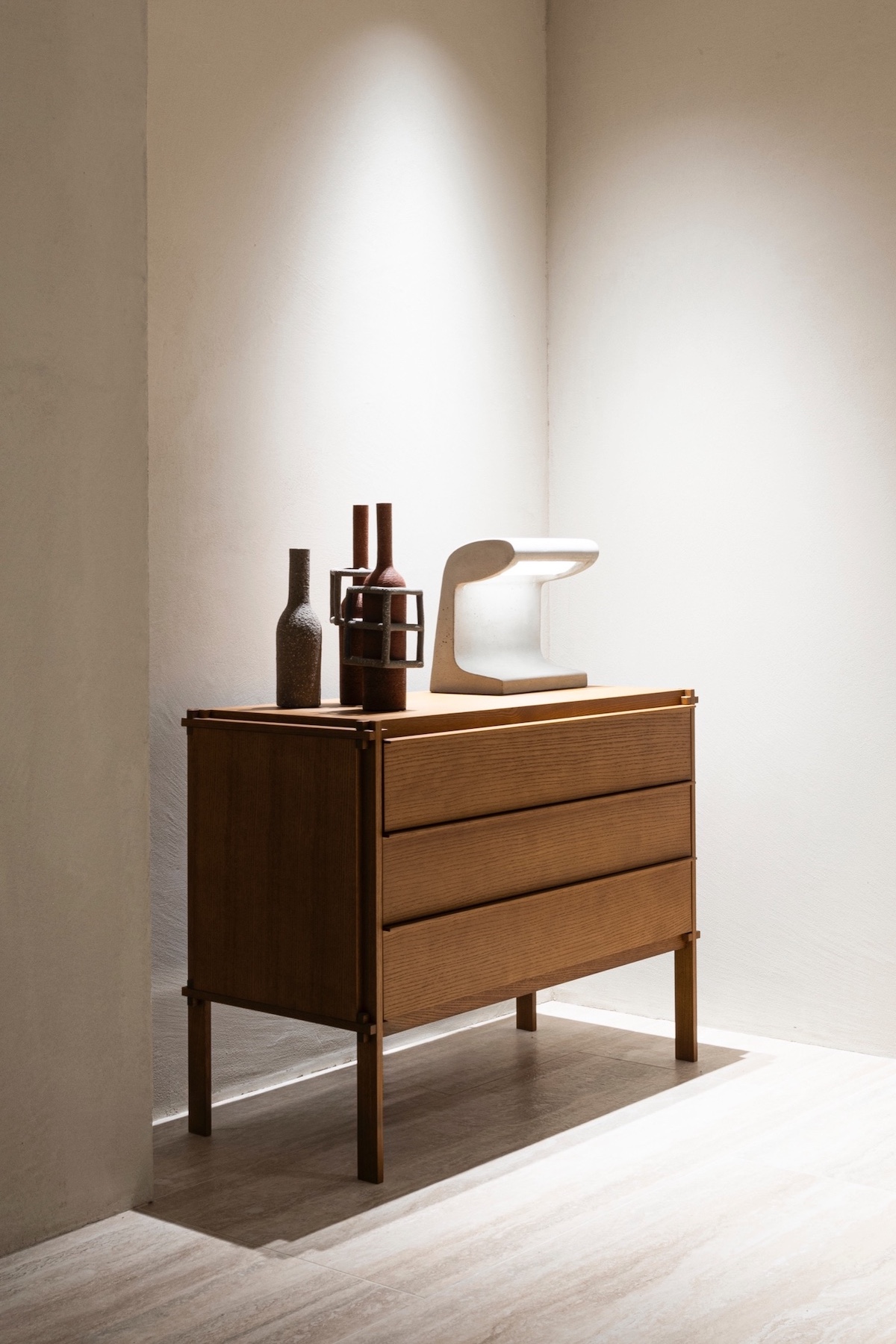
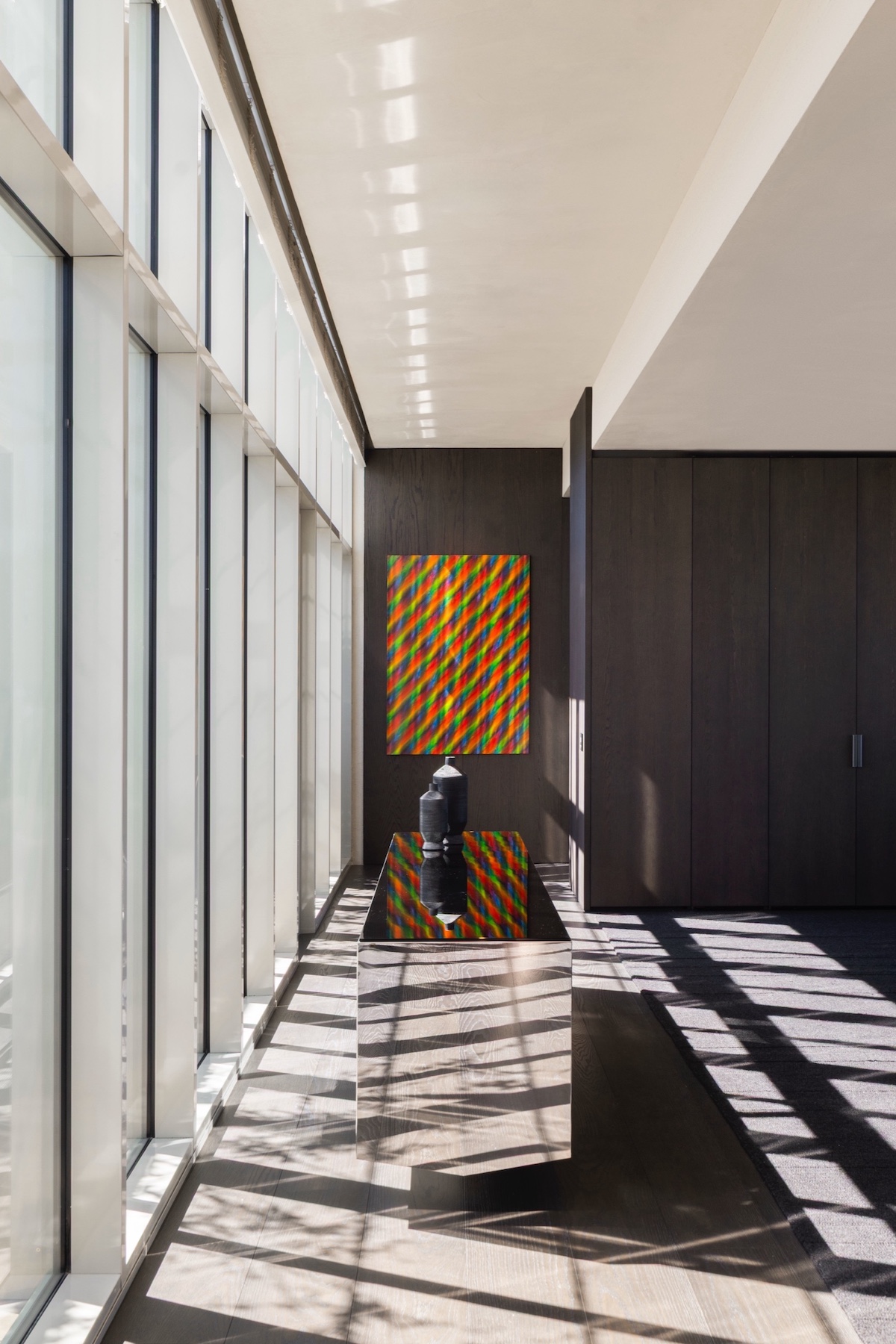
Each floor of the palazzo pays tribute to the Molteni&C archive and its collaborators past and present. Spaces are named after pivotal pieces and designers: Milano, Piroscafo, Gio Ponti Archives, Monk and contain photography, sketches and prototypes that trace the company’s design legacy. Works by Gio Ponti, Luca Meda, Aldo Rossi and Tobia Scarpa are juxtaposed with pieces by Jean Nouvel, Herzog & de Meuron and Foster + Partners, creating a continuity that feels organic rather than curated.
Contemporary art brings further texture. On the upper floors, a selection of paintings by Peter Schuyff, represented by MASSIMODECARLO, explores light, rhythm and abstraction. His Neo-Geo geometries echo the architectural grid of the interiors, reinforcing the space’s cultural depth. These installations were developed in parallel with additional contributions from Dimore Studio and Elisa Ossino, who introduced chromatic accents and material contrasts that enrich the atmosphere without disrupting its clarity.
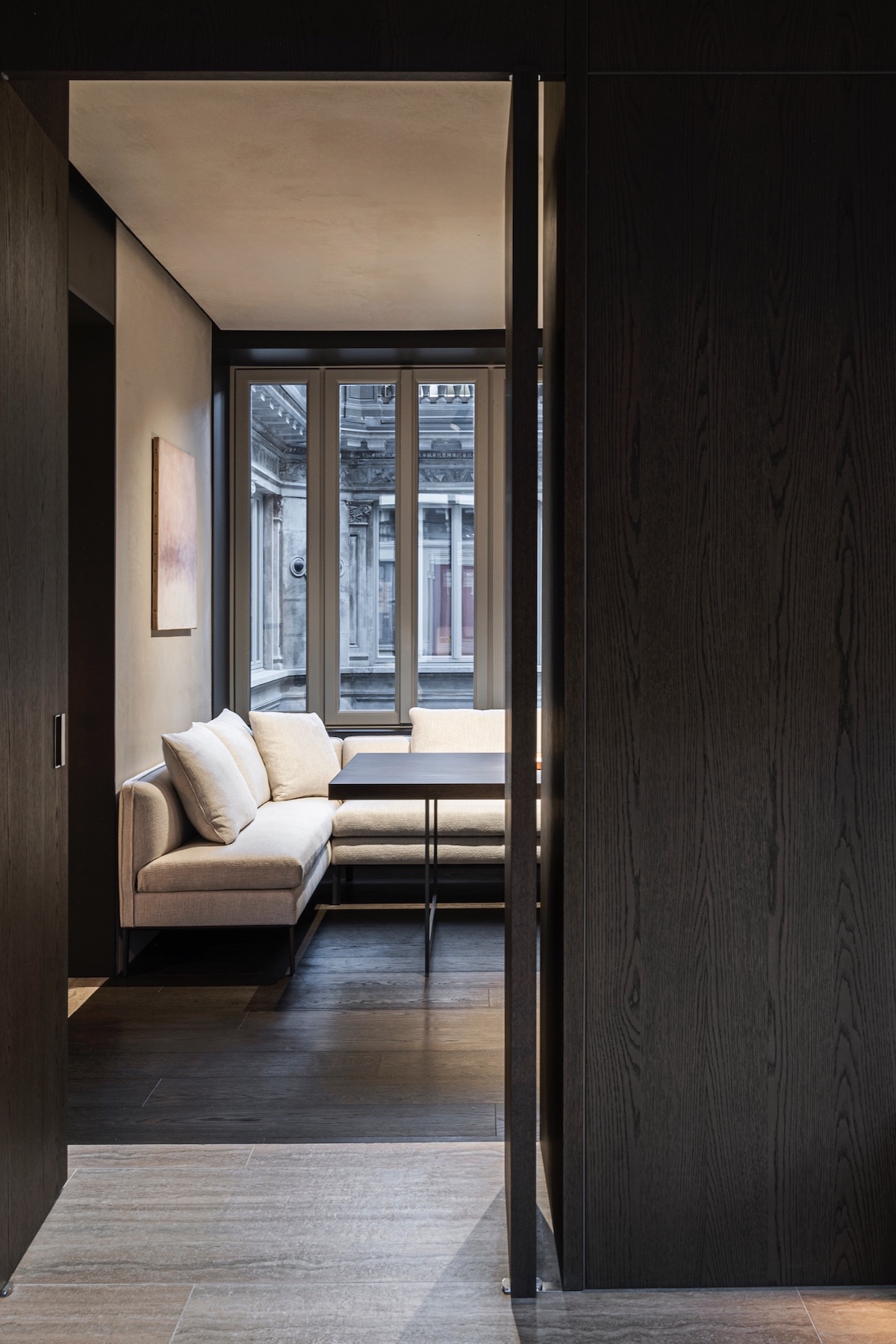
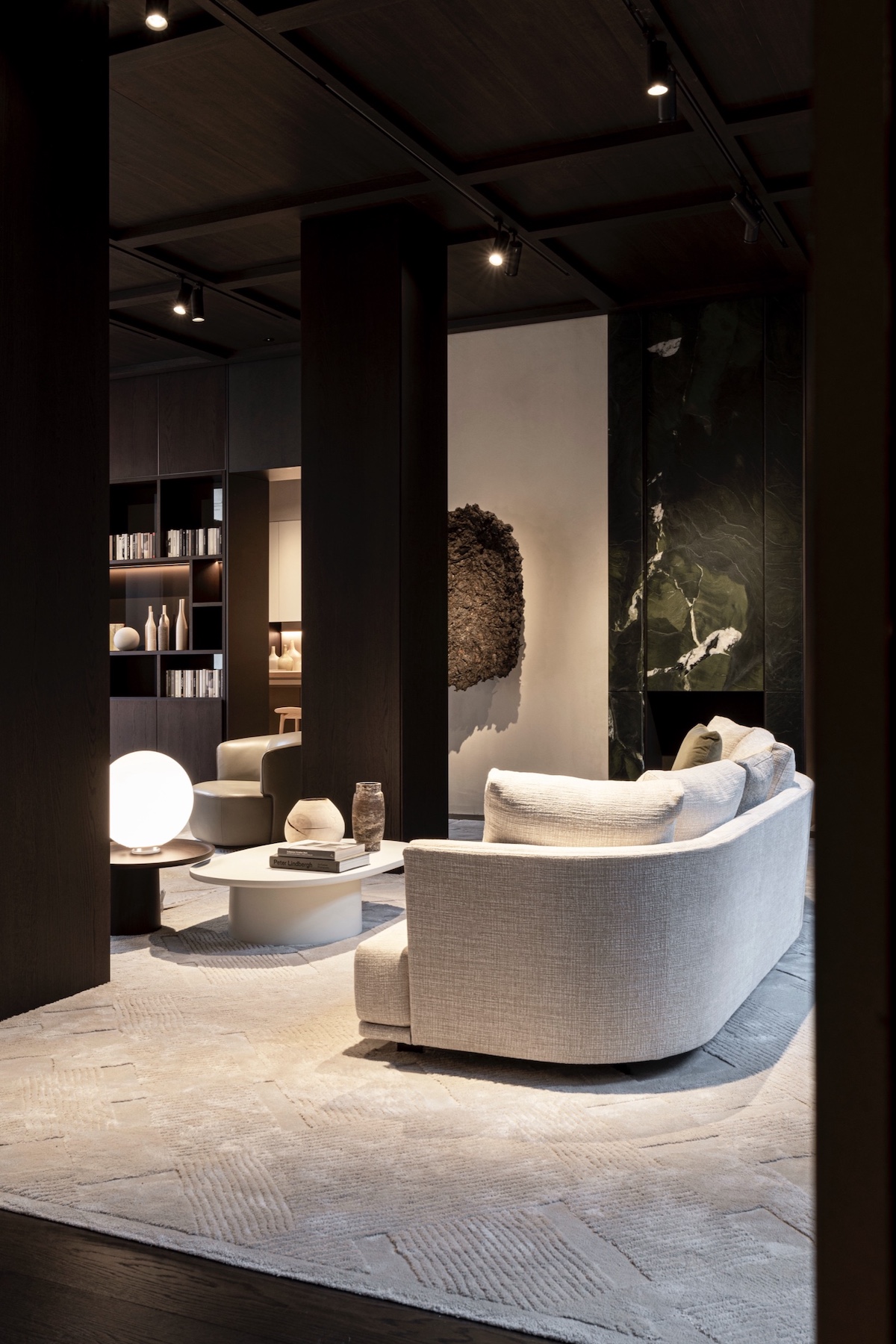
The building also demonstrates the versatility of Molteni&C’s integrated living systems. Rather than acting as individual products, modular systems such as Arial, 505, Sincro, Logos and Gliss Master are woven into the architecture itself. These elements shape the interiors with elegance and purpose, illustrating how design can support life without overwhelming it.
The terraces, designed by Stefano Baccari, bring a softer Milanese rhythm to the upper levels, with evergreen planting and sculpted forms that reflect the building’s material palette.The top floors are home to the Molteni Galleria – a programme of spaces for cultural gatherings, conversations and creative exchange. These rooms are not formal meeting areas, but salons in the truest sense: places to reflect, connect and share.
Palazzo Molteni also reflects a shift in Molteni&C’s global strategy. In 2025, the company chose not to present at Salone del Mobile, instead prioritising immersive architectural environments. The palazzo is the model for this approach: not an event, but a permanent invitation. According to Giulia Molteni, this decision reflects the company’s belief that people want to experience design in context: to walk through spaces that feel authentic, layered and alive.
Palazzo Molteni offers an alternative rhythm. It invites attention rather than demanding it, and frames design as something to be absorbed, not consumed. Each space is part of a quiet conversation between heritage and innovation, between Milan and the wider world.
With Giulia Molteni’s vision guiding its identity, and Van Duysen’s architecture shaping its atmosphere, this building brings together the disciplines of design, art and narrative into one measured expression. At once timeless and timely, it reflects the qualities that continue to define Molteni&C: discretion, elegance and cultural intent.